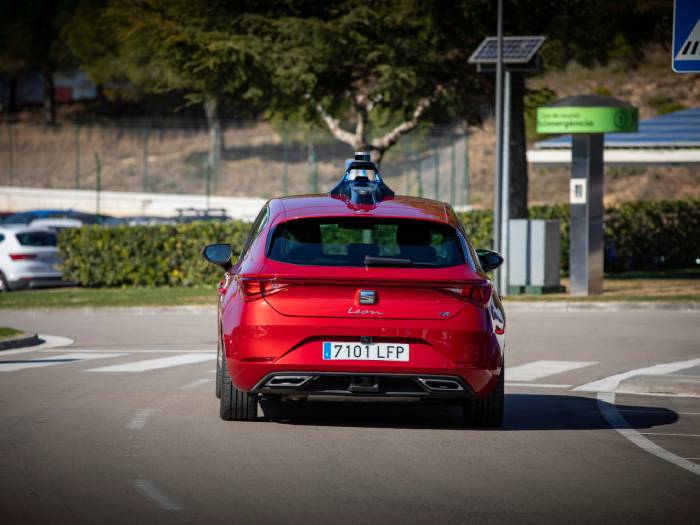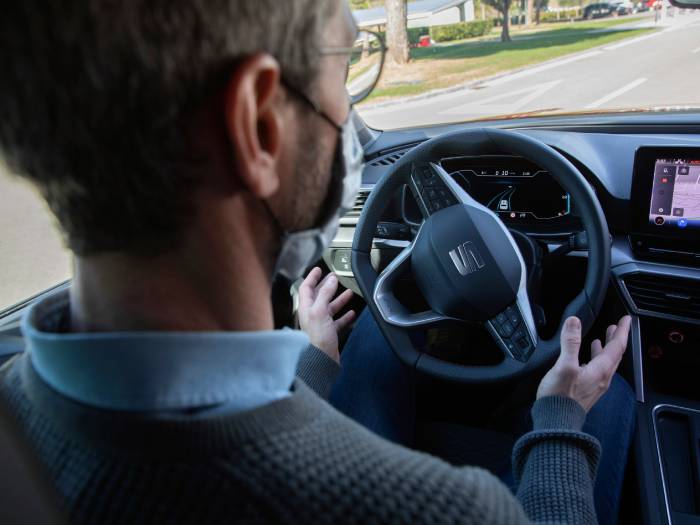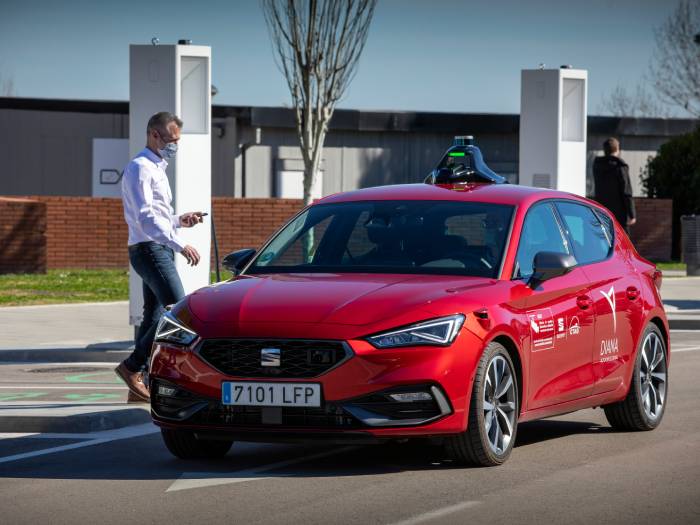SEAT tests autonomous driving with DIANA pilot project
DIANA is a pilot project carried out in collaboration with the Automotive Technology Centre of Galicia (Centro Tecnolóxico de Automoción de Galicia, CTAG), which uses a prototype based on the SEAT Leon to extensively test Level 3 autonomous driving.
SEAT S.A. is testing the potential of autonomous driving for intelligent urban mobility together with the Automotive Technology Centre of Galicia with the DIANA pilot project: a name not chosen by chance, inspired by the goddess of hunt, always depicted with her bow and arrows - which in this case point the way to the mobility of the future.
The DIANA project is also part of the SEAT S.A. Innova platform, which promotes continuous innovation in all areas of the company, fostering new ways of working based on co-creation and the start-up model. The aim of the project is to intensively test autonomous driving functions from which Advanced Driving Assistance Systems (ADAS) can be derived.
A very special Leon

The SEAT Leon used for the tests is equipped with 5 lidar sensors, 5 radars, 6 cameras, 12 ultrasounds and 8 computers that give it a 360° vision, generating a large amount of situational data that is processed in milliseconds and sent to a location module.
“This lets the car know where it is positioned and what obstacles are in its surroundings. Then it’s able to decide where it has to go and autonomously performs actions on the steering wheel, brakes, throttle and gearshift”, explains Oriol Mas, R&D engineer at SEAT S.A.
Three autonomous driving modes

In the DIANA prototype, the driver hands over control to the vehicle, but is still ready to take back control if necessary. DIANA has three functions: the first is Autonomous Chauffeur and takes control in low-speed traffic situations, to perform start and stop manoeuvres; the second is Automated Valet Parking (AVP), or driverless parking service; the third is called Summoning and allows the user to be picked up at their current location and driven to a targeted destination.
Tests have been conducted so far both at the SEAT S.A. facilities in Martorell and, more recently, on a controlled closed urban circuit.
HD maps for localisation

The user can summon the car via the app: the vehicle automatically starts and drives off, moving into the appropriate lane. “Thanks to the HD maps, the location is accurate to the centimetre and the car always knows it is in the right lane”, adds Mas. Then, when the car stops to pick up the user, the doors automatically unlock and the indicators signal that the vehicle is stationary. “Once the user is on board and has closed the door, it locks again, the car signals the start and drives off”.
If there is an obstacle on the road, such as a pedestrian, the Leon of the DIANA project quickly detects it and brakes on its own. Finally, after dropping the user off at the chosen destination, the car searches for a free space and parks automatically.
Challenges to face
The SEAT S.A. engineering team faced many challenges during the development of such a demanding pilot project. “In addition to the restrictions due to Covid-19, we had to deal with traffic permits, integration of sensors, vehicle control systems, validation of algorithms... it was quite a challenge and we still have lots of work to do, but we’re on the right track”, says Rubén Pérez, R&D engineer at SEAT S.A., who proudly points out that all the development has been completely transversal between departments.
Autonomous driving level 3
DIANA currently operates at level 3 of autonomous driving, on a scale of automation levels from 0 to 5. “It is important to continue developing and testing this technology to ensure that the system is 100% safe; as the levels of autonomous driving go up, they help reduce accidents and traffic”, Mas concludes.
In the near future, autonomous driving will make it possible to offer new intelligent mobility services, reducing traffic congestion in large cities and in areas of complicated urban mobility.
6 levels of driving automation
Advanced Driving Assistance Systems (ADAS) are classified into six categories according to the vehicle's level of autonomy:
- 0: No automation, the driver controls all vehicle functions.
- 1: The car has some assistance features, such as lane assist or cruise control, but it is up to the driver to decide whether or not to use them.
- 2: The driver remains in control, but the system can regulate steering and speed under the driver's supervision.
- 3: The system controls all dynamic aspects of driving (steering, speed and environment) independently, without the driver having to intervene. However, the driver must be prepared to act in case of danger.
- 4: The vehicle is able to perform the functions autonomously in all circumstances, so the driver can focus on secondary tasks without worrying about the car giving back control.
- 5: Full automation, the driver becomes an occupant in the vehicle and the system requires no human intervention, in all situations and circumstances.
Source: SEAT S.A.
VGI | Responsible OU: VP | Creation date: article date | Class 9.1
